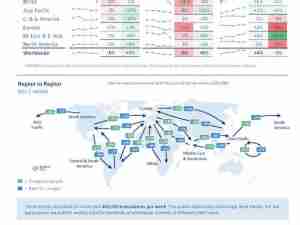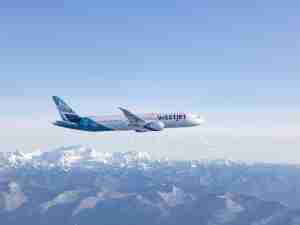Cathay `Begging With Golden Bowl’ to Win Back Chinese Fliers
By: | Aug 13 2017 at 09:56 PM | Air Cargo
It’s time for Cathay Pacific boss Rupert Hogg to go to the back of the plane.
With the company expected to announce another loss this week, Cathay Pacific Airways Ltd. needs to shift strategy from being the region’s top airline for premium fliers and make a bigger effort to woo some of the millions of mainland leisure travelers who have enriched its state-owned rivals in China, analysts say.
On Wednesday, Chief Executive Officer Hogg may report a loss of HK$1.2 billion ($153 million) for the six months through June, the median in a Bloomberg survey of three analysts showed. That would potentially put Cathay on course for the first back-to-back annual losses in its 70-year history. The Hong Kong company last month warned of a “disappointing” first-half.
Cathay is caught between budget carriers luring regional tourists and deep-pocketed, state-owned competitors on the mainland that offer cheaper, long-haul flights from cities like Shanghai, Guangzhou and Shenzhen, without the need to fly via Hong Kong. The airline’s fortunes are entwined with the former British colony’s declining prominence relative to the burgeoning wealth of the surrounding cities in southern China.
Key to winning back a bigger slice of the market from state-owned China Eastern Airlines Corp. and China Southern Airlines Co., is Cathay’s partnership with flag carrier Air China Ltd., said John Hu, an analyst at Morningstar Investment Services LLC in Shenzhen.
“Cathay is begging with a golden bowl,” Hu said. “It has Air China on its back in the mainland but it has yet to fully exploit that tie-up.”
Air China is Cathay’s second-largest shareholder with a 30 percent stake, but their cooperation is hampered by the fact that they belong to rival aviation alliances, limiting codeshare agreements, said Corrine Png, chief executive officer of Crucial Perspective Pte., which focuses on equity research in Asia’s transport sector. Cathay is part of Oneworld, while Air China is a member of Star Alliance.
A spokeswoman for Cathay declined to comment.
Investors so far have been unimpressed after Cathay in May said it would cut 600 jobs as part of a three-year corporate revamp, its biggest in two decades. That’s partly because the airline has revealed little else about the transformation. Cathay’s shares have risen 1.6 percent since the announcement, compared with a 6.7 percent gain in Hong Kong’s benchmark index. On Monday, the stock fell as much as 0.9 percent in early trading, poised for its lowest close in more than two months.
Only two of 20 analysts tracked by Bloomberg recommend buying the stock, with 11 advising holders to sell.
“It’s a good cost initiative, but not a profit initiative,” said Mohshin Aziz, an analyst at Maybank Investment Bank Bhd. in Kuala Lumpur.
Teaming Up
Meanwhile, Shanghai-based China Eastern and China Southern, with its headquarters in Guangzhou, near Hong Kong, have teamed up with peers in the U.S. and Europe through ventures and equity investments to extend their global network. Delta Air Lines Inc. took a minority stake in China Eastern in 2015 and American Airlines Group Inc. announced a similar deal with China Southern earlier this year.
While Cathay bet on its hub in Hong Kong to build a clientele of wealthy business passengers prepared to pay premium fares, the mainland players became rich—China Southern flew about 38 million more passengers since 2010—tapping into the boom in tourists and first-time fliers spawned by China’s economic boom. During the same period Cathay added over 7 million fliers.
Last year, 122 million tourists ventured out of China, a number that’s more than doubled in seven years, according to data from the China National Tourism Administration.
Cathay said last year that premium travel was slumping, and has offered seasonal discounts for the front seats.
“While Cathay has a strong premium product that is well-suited for the first and business travel market, its cost structure is less competitive when vying for leisure traffic,” said Crucial Perspective’s Png. Cathay needs to take a leaf out of Singapore Airlines Ltd.’s playbook and start a low-cost carrier to target the budget travel market, which has good growth potential in North Asia, Morningstar’s Hu said.
One way to do that would be through Cathay’s affiliate Hong Kong Dragon Airlines Ltd., said Hu.
“There’s already a perception among customers that Cathay Dragon fares are lower than Cathay Pacific,” he said. “The company should reduce costs for Cathay Dragon and play to that popular perception.”
Cathay merged the two carriers’ websites in March.
A more radical path has been popping up with increasing frequency in speculation on mainland Chinese social media: Air China should acquire or merge with Cathay to create the world’s largest cargo airline and second-largest passenger carrier.
“The reality is that we are getting into a congested market,” said Mohshin at Maybank. “The superior quality proposition is diminishing by the day because competitors are getting better. The glory days of Cathay are ancient history.”








